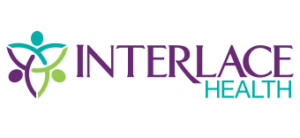The Impact of Informed Consent – Part 2: Satisfaction
In Part 1 of this blog series, we examined informed consent’s impact on compliance, the legal and ethical implications of missing consent forms, and the standardization an eConsent solution brings to the process.
In Part 2, we will take a deeper look at how a paper-based informed consent process and its intrinsic inefficiencies can impact satisfaction for both clinicians and patients.
Informed Consent’s Impact on Satisfaction: Clinicians & Patients and the Paper Trail’s Impact
Satisfaction in healthcare is important. Both clinician and patient satisfaction are directly tied to clinical outcomes, patient retention, and medical malpractice claims. It affects the timely, efficient, and patient-centered delivery of quality healthcare. To ensure future success, hospital leaders continue to find new strategies to improve satisfaction rates.
Informed consent is a critical process that touches both clinicians and patients alike, and has a direct impact on satisfaction.
From the Clinician’s Perspective:
Ask any healthcare professional what one of the biggest issues in healthcare is today and you will most likely see “physician burnout” near the top of the list.
The physician’s work world is one of efficiency. The goal is to move through each patient encounter effectively, while also developing rapport, establishing the professional physician/ patient relationship, and accurately determining the plan of care. Paperwork, learning new technology systems, federal requirements, and the ongoing need for developing relationships with healthcare insurers creates time away from patients – resulting in a disconnect.
Medscape’s recent National Physician Burnout & Depression Report found that the top contributor to physician burnout was excessive administrative tasks. Managing paper consent forms and asking for another consent form from a patient certainly falls under the bucket of administrative tasks.
Members of staff join in the dissatisfaction patients feel when they are asked to re-sign consent forms. It’s not comfortable to be the bearer of bad news and stand there while an upset patient vocalizes their displeasure. After all, the staff member is not the one that lost the form.
Activities such as scanning, retrieving, and labeling forms and indexing them with patient records are time-consuming. These lagging processes distract staff, such as nurses, whose core focus should be placed on quality time spent with patients, not tracking down their paperwork.
From the Patient’s Perspective:
Cumbersome paper-based processes also frustrate patients because they are accustomed to the convenience of using apps for everything from having dinner delivered to their door, to avoiding rush- hour traffic.
Attention continues to surround the focus on improving the patient experience. This is partly due to a changes to reimbursements that directly tie revenue to patient satisfaction (specifically HCAHPS scores).
One of the easiest ways to show respect for patients is to value their time and prevent long delays during their hospital stay.
Sadly, JAMA reports that missing consent forms cause 10% of procedures to be delayed, costing each hospital over $500K each year. This of course does not count the emotional toll it takes on patients. “Gurney consents” are an all too common occurrence in hospitals that use paper-based consent forms
As Colin Hung States in his recent article: Looking to Improve Patient Experience? Simple Options Can Yield Big Results:
“For patients, it is a horrible feeling to show up at the appointed time for a procedure, only to be carted to a waiting area in nothing but a flimsy robe and left to wait with no explanation. Now imagine how it would feel after 20 minutes of waiting to have a member of staff come and ask you to fill out another set of consent forms because your originals had been lost. Of course, while the patient is filling out the form, the staff member must review all the risks and implications of the procedure before you can sign the forms again. I know I would be about as calm as a palm tree in a hurricane.
The informed consent process is a golden opportunity for hospitals to improve the patient experience. It is a chance for health professionals to engage patients in their care. This engagement has numerous benefits including:
- Reducing the anxiety patients have about the upcoming procedure, which in turn helps improve patient outcomes. This study published in the British Journal of Surgery, shows patient who are less anxious have fewer post-procedure wound complications.
- Demonstrating that the health professional (and by extension the hospital) care about the patient as a person.
- Mitigating the risk of malpractice. Lack of communication and feeling like clinicians didn’t care about them are common reasons cited by patients who decide to sue for malpractice. This New York Times article has an excellent summary of various studies into this phenomenon.”
From a patient’s perspective, paper-based forms can lead to overlooked sections, forgotten forms, or the absence of a signature in a required field. Additionally, patients lying in a prone position in a hospital bed may experience discomfort and have difficulties viewing and signing paper documents and writing with a pen.
As Colin Hung states in his article, improving patient experience is a top priority. Instead of grandiose new programs, hospitals and practices would see better results by focusing on simple options that have a big impact – like an eConsent solution. eConsent makes it easier for organizations to treat patients with respect and gets patients involved in their care.
In a world where mobile technologies and the speed they bring are prevalent – delays in care can leave a big impression in the minds of those that have the most influence in shaping the future of a health system: the patient.
eConsent: Delivering a Better Experience for Clinicians and Patients
FormFast’s eConsent solution eliminates the need for outdated, paper-based consent process and enables the informed consent process to be automated. FormFast’s replaces paper forms with eForms that offer many benefits to both patients and staff.
With an eForm solution, consents are quickly signed by the patient, immediately archived, and instantly visible to the care team. Healthcare staff can deliver better patient care and realize higher levels of productivity with a reliable and standardized process; while patients appreciate the familiar and intuitive interface, and overall seamless process.
Informed consent is a small change, that produces big results and impacts key areas ripe for improvement, such as satisfaction. See why today’s leading healthcare organizations are automating the critical process of informed consent.
Stay Tuned for Part 3: Examining Informed Consent’s Impact on Cost
[/vc_column_text][/vc_column][/vc_row][vc_row parallax_image=””][vc_column][/vc_column][/vc_row]





Leave a Reply
Want to join the discussion?Feel free to contribute!